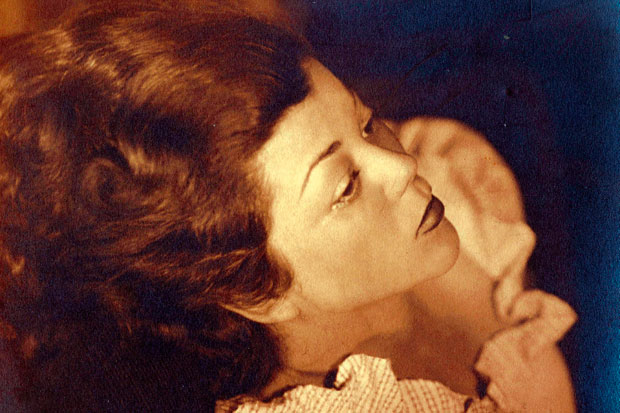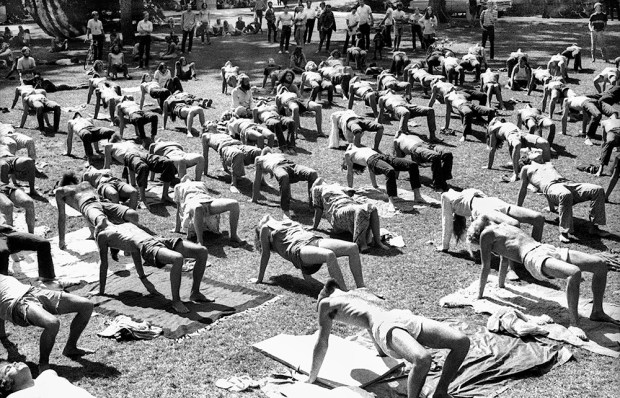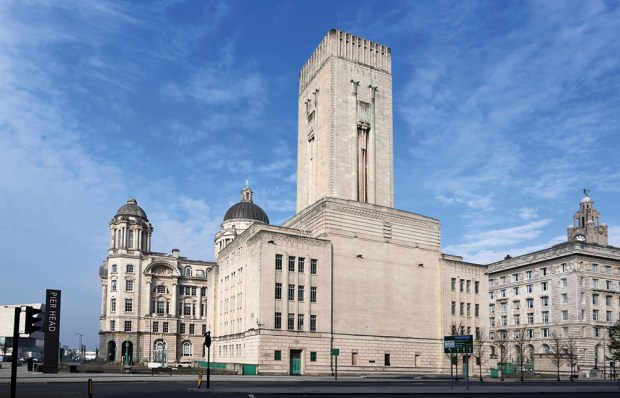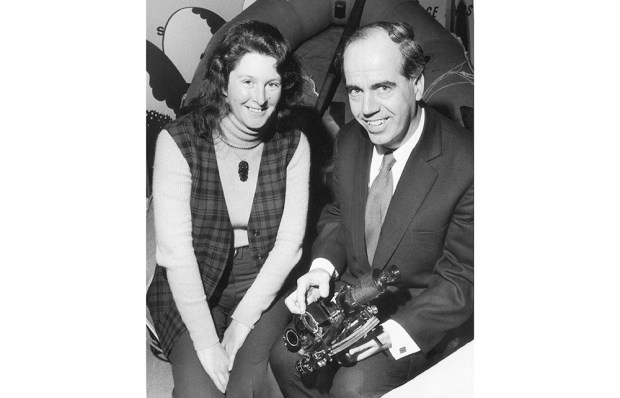Family history is all the rage at the moment — finding out about one’s ancestors, digging back into one’s roots. Sofka Zinovieff has written the strange, and strangely moving, tale of her family’s unorthodox relationships. By turns comical, tragicomical and melodramatic, her book often reads much like fiction, and she recounts it like a novel.
The principal characters are: Gerald Berners, born in 1883; his lover, nicknamed the ‘Mad Boy’, Robert Heber-Percy, born in 1911; the author’s grandmother, Jennifer Fry, born in 1916; and the author herself, born in 1961. Zinovieff expertly interweaves their unlikely history from late Victorian England until the present day, leaving the reader on the last page with ‘a view up to the intriguing gateway of Faringdon House’. It is this house which is at the centre of their story.
Faringdon belonged to Gerald Berners, who became 14th Baron Berners in 1918, inheriting from an uncle both the title and substantial amounts of property and money. Berners turned Faringdon — then in Berkshire, now, owing to changes in county boundaries, in Oxfordshire — from an attractive but conventional enough stone-built Georgian building into an exotic dream. This was between the wars, during the last heyday of the grand English country house, a particularly romantic period before the second world war and its aftermath overturned a way of life which would be lost for ever.

Similar country houses flourishing in these brief decades were Port Lympne, Kent, created by another aesthete, Sir Philip Sassoon, and Plas Newydd, on the Isle of Anglesey, recreated by the Marquess and Marchioness of Anglesey. Compared with the latter, Faringdon was not grand — it had only five main bedrooms — nor historic, in the sense of a Chatsworth or a Hatfield, but it was at the centre of a prosperous estate, in its own parkland; and plentifully staffed, it was run on luxurious lines. The interiors were idiosyncratically furnished by Berners, but it was perhaps most noted for the birds flying outside which he dyed:
The effect was stunning: turquoise, emerald, ruby and sapphire fantailed pigeons — like a bizarre daydream of gems thrown into the air. It was just the sort of alchemy that pleased Gerald: aesthetically surprising; a challenge to the humdrum; a sophisticated tease to the English, the conventional and the rural.
Berners, who was fictionalised as Lord Merlin in Nancy Mitford’s novel The Pursuit of Love, was a talented musician, a composer and a painter, as has been described in The Last Eccentric. the definitive biography by Mark Amory published in 1998.
It was in 1932 that the middle-aged Berners met and immediately fell for Heber-Percy, 28 years younger than himself. The ‘Mad Boy’, who both disrupted his life by his wild behaviour and at the same time enhanced it (or so he thought), lived with him at Faringdon until Berners’s death in 1950.
Throughout these years their friends whirl across the pages of Zinovieff’s book like Berners’s coloured birds. Here are Doris Castlerosse, Diana Mosley and her sister Nancy Mitford, John and Penelope Betjeman and her horse, Moti, who took tea in Faringdon’s drawing-room, Rex Whistler, Cecil Beaton, of course (he ‘was becoming an increasingly significant element in fashionable society’, we’re told); also Elsa Schiaparelli, Salvador Dali, Constant Lambert, Margot Fonteyn, Frederick Ashton and many more. The author crams them in until the reader feels as though on a dizzying tour of the Faringdon visitors’ book.
Berners also bought a delightful house in Rome, where he was as generous a host as ever: Rex Whistler stayed and painted alongside him there, as well as creating a memorable portrait of Berners at his easel — not, alas, in this book — and subsequently incorporating a fantasy version of him as a small boy in his mural at Port Lympne.
‘In 1937 the visitors’ book at Faringdon shows a remarkably busy year,’ writes the author:
Gerald and Robert welcomed Igor Stravinsky and his mistress Vera Sudeikina, Malcolm Sargent and Osbert Sitwell. Among the younger guests were the Lygon sisters, Mitford sisters [and] Cyril Connolly. And two visits are recorded by someone who has not been seen before — a 21-year-old woman with dark hair and captivating eyes and marvellous clothes. Her name is Jennifer Fry.
This is the ‘grandmother’ of the title. However, it was not until the middle of the second world war that she moves to centre-stage at Faringdon. In the summer of 1942 she and the ‘Mad Boy’ suddenly got married. Nobody knew — or knows to this day — why: there seems no evidence of a liaison, let alone love, between the two.

As it happens, Jennifer was pregnant, and when the baby, Victoria, was born, Robert claimed her as his daughter and thus she was brought up. Predictably, the marriage did not last and within a short while mother and baby moved away. Gerald Berners was always kind to the little girl when she visited Faringdon with her nanny during her childhood.
Berners died at Faringdon, leaving everything to Heber-Percy. Victoria was never close to Robert, with whom she felt nothing in common: ‘We didn’t “get” one another,’ she said. She married young, and Sofka, the author, was born in 1961. Robert took to Sofka, on the other hand, and regularly invited her to Faringdon during the 1980s: ‘I suspect he liked adding me into a weekend house party as a wild card,’ she writes:
There were regularly people who reacted with astonishment. Some didn’t even know that Robert had a child, let alone a grandchild. Others assumed he was exclusively gay. I could tell he liked me and I was pleased.
Quite how much he liked her was to be unexpectedly revealed: in 1987,when Robert was in his seventies, and Sofka 50 years younger, he told her he was leaving her everything. He died within a few months, and thus Sofka found herself the chatelaine of the house and the estate — as she still is.
But the mysteries of this extraordinary family saga do not end there: in old age, Jennifer, the grandmother, casts doubt upon her daughter’s paternity and the story finally romps away in a surprising direction. The search for the father through the ranks of what the author calls ‘the titled class’ begins to resemble a Balzacian intrigue — or even a version of Mamma Mia. A formidable array of well-connected elderly ladies — friends of Berners and the ‘Mad Boy’ half a century earlier — are canvassed on the question of Victoria’s real father. Billa Harrod, Clarissa Avon, Janetta Parlade and the Duchess of Devonshire — all have their conflicting views. ‘Robert might have been pleased to be married and give the impression of having a daughter. It helped cover up a bugger’s life,’ said one. Robert’s nephew opined that he was very proud of Victoria: ‘After all, she was stunning, and it would raise your stud fee to be her dad.’ The equine and anatomical language used by ‘the titled class’ in analysing possible paternity is arresting.
The mystery has never been solved. So, at the end, we are left with a puzzle — one that Lord Berners, with his extraordinary and surreal sense of humour, would undoubtedly have relished.
Got something to add? Join the discussion and comment below.
Get 10 issues for just $10
Subscribe to The Spectator Australia today for the next 10 magazine issues, plus full online access, for just $10.
Available from the Spectator Bookshop, £21 Tel: 08430 600033. Mirabel Cecil is co-author (with her husband Hugh Cecil) of In Search of Rex Whistler.
You might disagree with half of it, but you’ll enjoy reading all of it. Try your first month for free, then just $2 a week for the remainder of your first year.













Comments
Don't miss out
Join the conversation with other Spectator Australia readers. Subscribe to leave a comment.
SUBSCRIBEAlready a subscriber? Log in